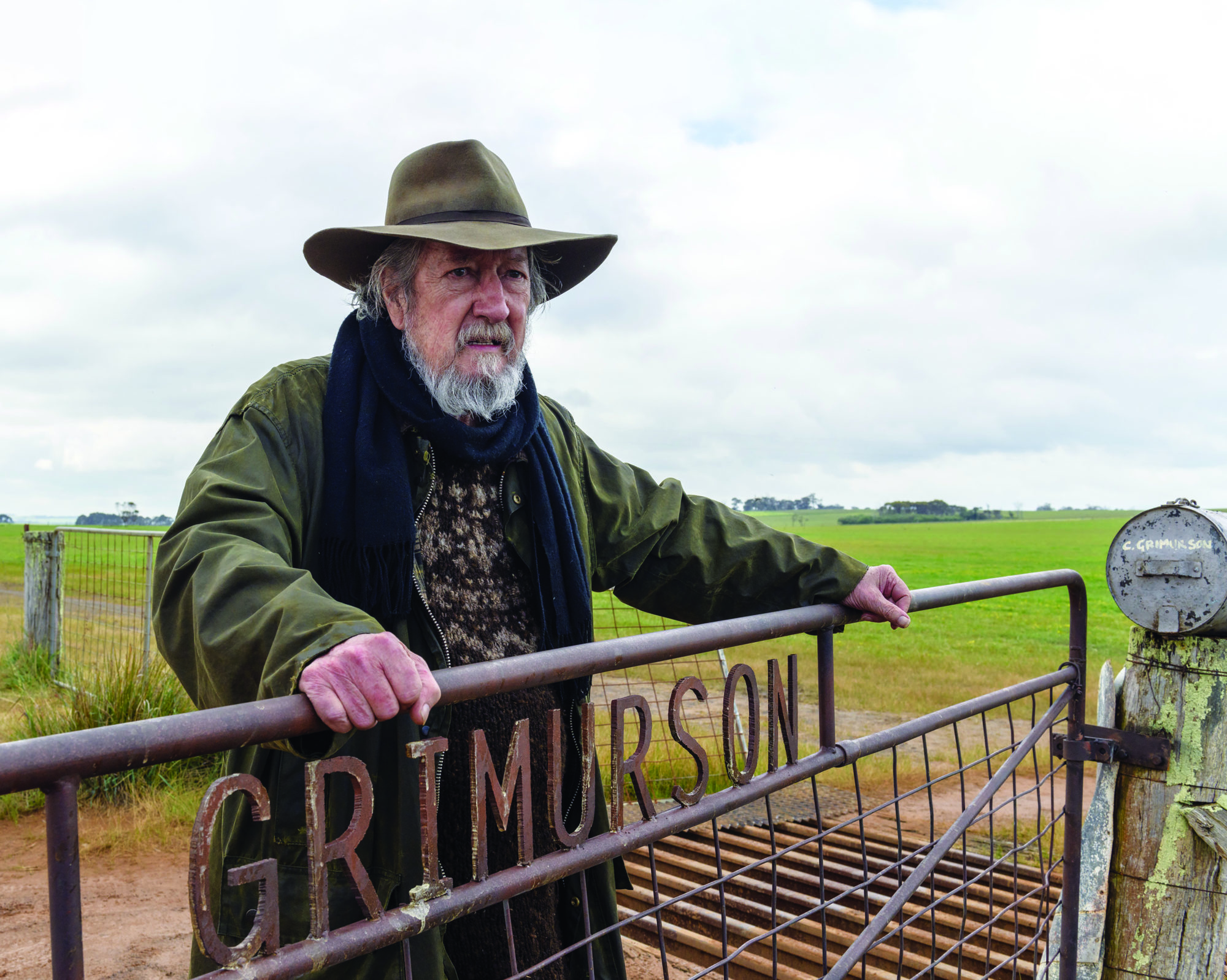Back in 2015, the new film from Australian director Jeremy Sims, Last Cab to Darwin, did the rounds of the international festival circuit alongside an Icelandic film called Rams, directed by Grímur Hákonarson.[1]The films screened together at the 2015 Toronto, Busan and Thessaloniki film festivals, as well as at the Palm Springs International Film Festival in January 2016. The latter is an understated triumph of cinema, which, through the tale of two feuding brothers, meditates on the cycles of life and death; humankind’s relationship with animals, landscape and climate; and the emotional intricacies of family. The film would have sat at the back of Sims’ mind for a couple of years until producers Janelle Landers and Aidan O’Bryan approached him to direct an Australian remake based on an adapted script by screenwriter Jules Duncan.[2]See Karl Quinn, ‘Rams Stars Miranda Richardson and Sam Neill Lock Horns, Sheepishly, in WA’, The Sydney Morning Herald, 16 October 2020, <https://www.smh.com.au/culture/movies/rams-stars-miranda-richardson-and-sam-neill-lock-horns-sheepishly-in-wa-20201008-p563el.html>, accessed 10 November 2020. The result is Rams (Sims, 2020).
Its predecessor is a beautiful film, touched by a sense of quiet, of repose, of world-weary bleakness; it also has an immensely affecting soundtrack defined by the minimalist organ works of Atli Örvarsson. And it contains (I don’t think it is an exaggeration to say) one of the most heartbreakingly moving, vivid and sad final scenes in recent cinema. Such is the poetry of Hákonarson’s film, it warrants comparison with another masterpiece that deals with the dignity and spirituality of traditional rural farming, the 2010 Italian film Le Quattro Volte (Michelangelo Frammartino).
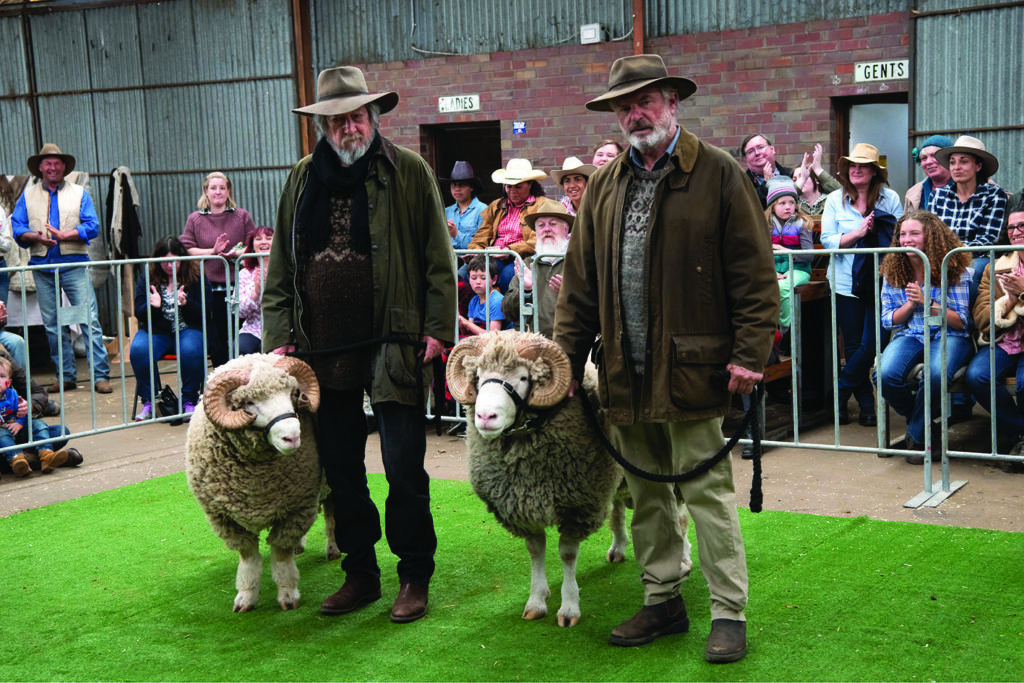
In Sims’ Rams, the rolling hills of south-west Western Australia replace the sweeping plains of Iceland. The two Grimurson brothers (the name being a nod to the director of the Icelandic film), both well into their sixties if not older, reside on a farm where they oversee their respective flocks of rare-breed sheep. The brothers, who each live alone in separate houses, have not spoken to each other in forty years; and the farm is divided between them in terms of property and acreage. They are both elite breeders of rams and ewes, but have vastly different temperaments. Colin (Sam Neill) is the main character: a solemn, introverted man who struggles to socialise, and whose interactions with the community of Mount Barker, the nearest town, are reserved at best. By contrast, his brother, Les (Michael Caton), is a boorish, violent alcoholic whose behaviour verges on sociopathy. The Grimurson brothers are locked in an ongoing agricultural cold war, fought out in the enclosures of livestock shows and over the general prestige of their beasts.
The brothers’ antagonistic but functional coexistence is devastated when the deadly ovine Johne’s disease (OJD), an infectious wasting disease affecting sheep, is detected in their valley (in the Icelandic film, the disease is scrapie, which Australia is currently free of).[3]See Katie Webb, ‘Scrapie’, Government of Western Australia, Department of Primary Industries and Regional Development website, <https://www.agric.wa.gov.au/livestock-biosecurity/scrapie>, accessed 10 November 2020. Each brother deals with the trauma of his flock being slaughtered in his own way: Les, driven by anger and a strident victim complex, turns to the oblivion of the bottle; while Colin, whose sorrow is turned inward, opts to continue breeding by secretly keeping four sheep in a small room in his house. When the authorities inevitably discover Colin’s subterfuge, he turns to Les for help, which he duly provides, precipitating more interaction between the siblings than has occurred since they were young men – even if it is stunted and awkward.
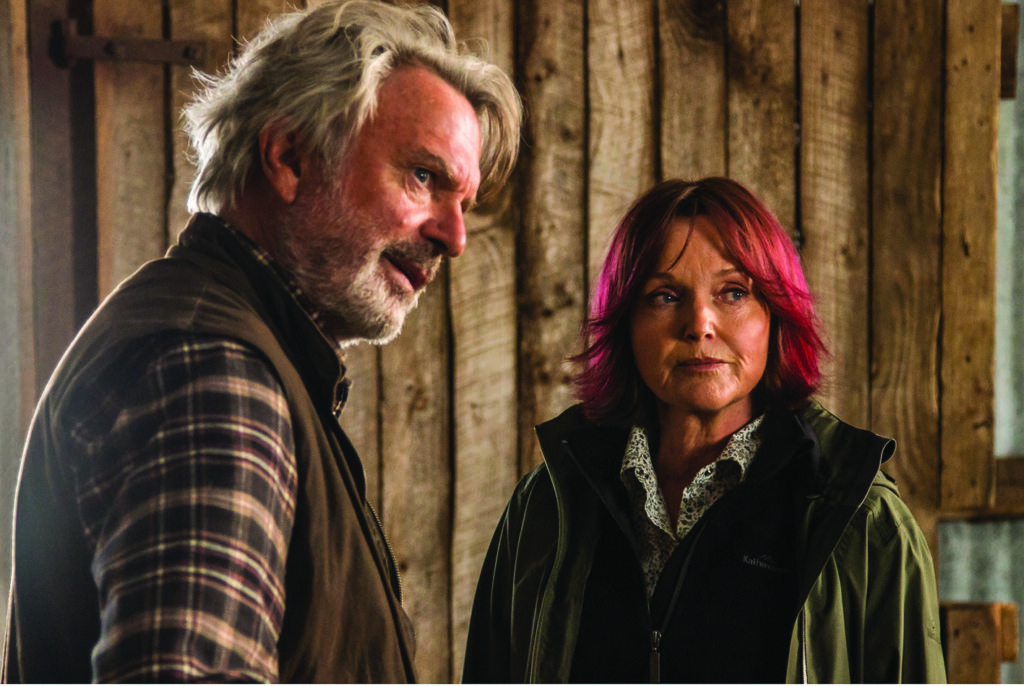
This basic synopsis can also apply to the original Rams, though the differences in storytelling, mood and characterisation are stark. The Icelandic film is slower, subtler, stranger, and relies much less on expository dialogue, which occasionally feels a little unnatural in Sims’ rendition. Duncan has stated that his intention was not to ‘adapt’ Hákonarson’s feature but to ‘reimagine’ or reinterpret it, and that he aimed to turn what is essentially an arthouse film into a mainstream movie with broad appeal.[4]Jules Duncan, ‘Writer’s Statement’, in Roadshow Films, Rams press kit, 2020, p. 15. Emphasis removed. He and Sims have successfully achieved this thanks to a number of adjustments to how this story is told.
First and foremost, the Australian Rams is, if not quite an out-and-out comedy, certainly a comedy-drama; by comparison, the Icelandic film keeps its rare moments of humour decidedly black, often with an almost Beckettesque sense of futility and absurdity. There are more laughs to be had in the first ten minutes of the remake than in the original’s entirety. Sims’ Rams even brings humour to some of its predecessor’s more alarming scenes, such as when a raging Les fires a shotgun into Colin’s small wooden house (with Colin inside). Duncan also rewrites certain characters so that their function is principally as a source of mirth: the Department of Agriculture official who threatens to shut down the brothers’ farm, DeVries (Leon Ford), is a fastidious, clownish bureaucrat to the point of caricature. The equivalent character in Hákonarson’s film is merely a grey, dour and reasonable civil servant.
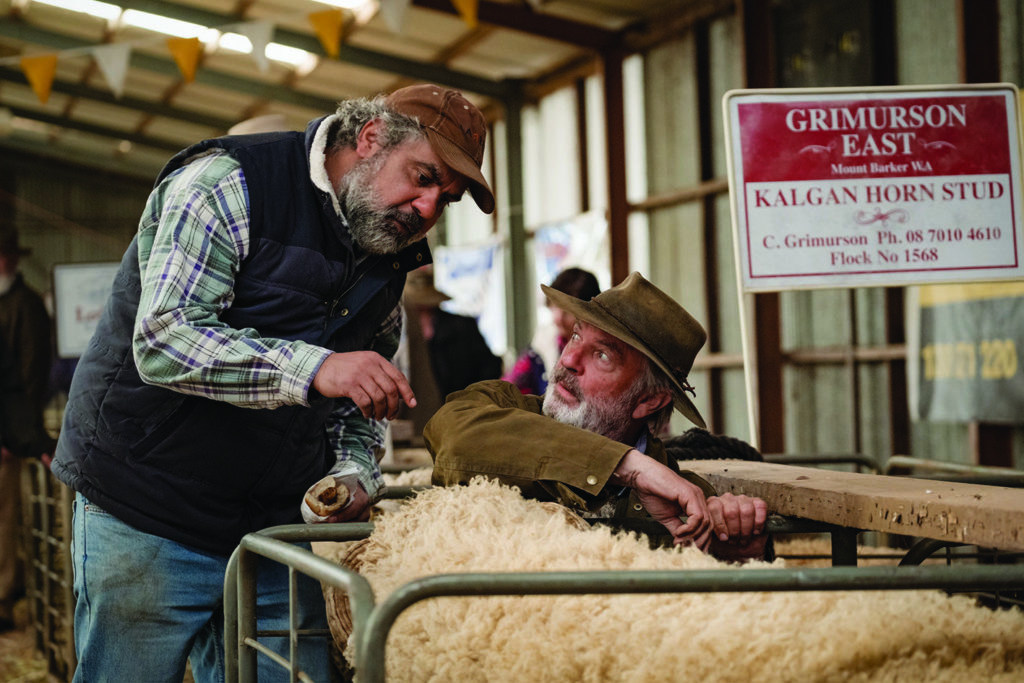
The other key way Rams makes a concession to conventionality for the sake of popular appeal concerns its drastically altered ending. In that aforementioned original closing scene, the brothers have become lost in a dangerous snow blizzard as they attempt to transport sheep to high ground. Gummi (the equivalent of Colin, played by Sigurður Sigurjónsson) loses consciousness in the extreme conditions, forcing Kiddi (Les’ equivalent, played by Theodór Júlíusson) to dig a shelter in the snow, remove both his and Gummi’s clothes and huddle their naked bodies together for warmth, Kiddi telling his brother between gasps, ‘It’s going to be just fine.’ The film abruptly ends without Gummi reviving or any prospect of rescue.
Duncan re-creates this scenario with a bushfire. Colin and Les herd their sheep into the heart of a destructive blaze nearby, with Colin losing consciousness due to smoke inhalation and Les cradling him in the waves on a beach. However, there are nearly ten minutes remaining in the film at this point, and in the next scene we see the brothers – apparently reconciled and both fit and healthy – happily working on their farm together alongside their friends from Mount Barker. The difference in tone between the two films is encapsulated by these contrasting denouements. While Hákonarson’s ending is vastly more emotional, meaningful and moving, one cannot say that the remake’s conclusion does not work: its life-affirming sentiment fits perfectly with the much sunnier, friendlier and lighter mood of Sims’ version.
Duncan also deserves credit for certain elements that have not been altered. In the first film, it is never revealed what caused the initial rupture between the two brothers. That intriguing ambiguity is mostly retained here – although one of the best lines of the film comes when Colin explains to the local vet, Kat (Miranda Richardson), ‘You don’t always need things to happen; people are just different.’
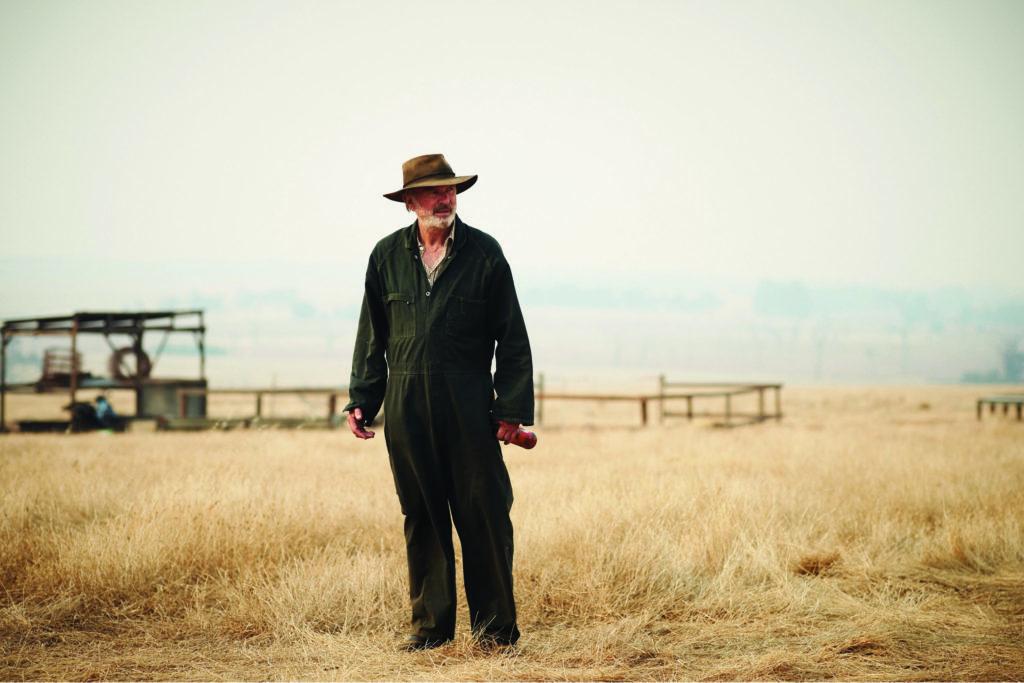
The performance of Neill, as he continues to negotiate his impossibly handsome senior years, is pitch perfect. His depiction of repression, sadness and resigned loneliness represents the finest acting in the film. Caton, too, distinguishes himself as the spitting, snarling Les – interestingly, Sims cast him in the role as a deliberate contrast to the warmer and more soulful character Caton plays in Last Cab to Darwin.[5]See ‘Introduction: The Saga of the Grimurson Brothers’, in ibid., p. 6.
The rest of the cast is a mixed bag. One absence in Hákonarson’s Rams is its lack of prominent women characters. Perhaps to remedy this, Duncan fleshes out the original’s Katrin (Charlotte Bøving) a great deal, giving her replacement, Kat, a backstory (she is a British expat) and an emotional life. Unfortunately, though, this character is unconvincing and flimsily written, her dialogue replete with clichés and banalities, ensuring no engaging character traits or personality are constructed, despite the vastly experienced Richardson’s well-known talents. The nadir is arguably one particularly overblown and unearned scene of confrontation between Colin and Kat, which lacks both nuance and intensity. In addition, the script hints at a possible romance between the two, which is thankfully not followed through – such a storyline would have greatly compromised the integrity of Neill’s unsociable character and the film generally. A stronger female presence in Sims’ version is Angela (Asher Keddie): a fellow sheep breeder, the leader of the local volunteer fire service and a single mother after the death of her husband in a previous year’s bushfire. Keddie portrays Angela with typical grace and composure. The other member of the supporting cast worthy of particular praise is Wayne Blair as Lionel, an affable and witty farmer and the only character identified as Aboriginal.
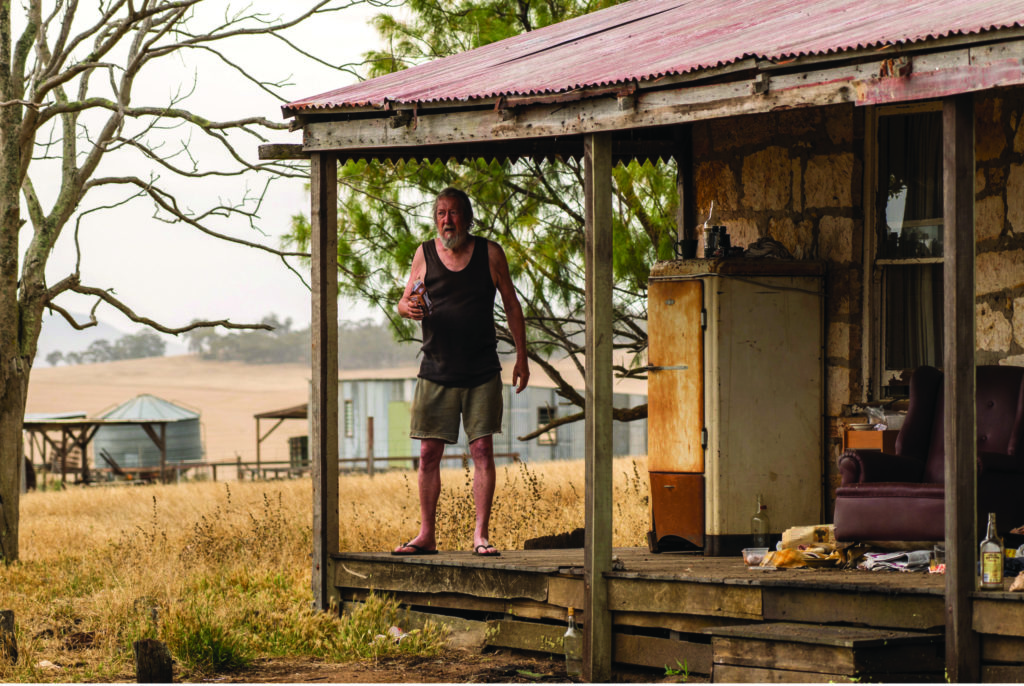
More of the film’s relatively few weaknesses come from that rewritten plot, and the holes to be found therein. In Hákonarson’s Rams, there is a brief scene in which the brothers discuss why they are risking the brutal winter weather to take their sheep to higher ground. In the remake, there is no indication of the practical reason behind Colin and Les taking to a quad bike to herd the sheep directly into the mouth of a towering bushfire. Another problem comes with the character of DeVries, whom Les knocks unconscious with a spade, an act of violence that allows the brothers to escape with the sheep. In the Icelandic film, the fate of the equivalent character after he is bashed by Kiddi doesn’t really matter, given the grim way the film ends soon after. In Sims’ rendition, however, we see the brothers thriving back on their farm after escaping the fire, begging the question of whether there are any ramifications for this quite serious assault, or even whether DeVries recovered. One might argue that the viewer should here employ some suspension of disbelief, but this is not the sort of film where that should be required; in other ways – such as depiction of disease, natural disaster, rural communities and even agricultural shows – its dedication to realism is admirable.
Rams is, if not quite an out-and-out comedy, certainly a comedy-drama; by comparison, the Icelandic film keeps its rare moments of humour decidedly black, often with an almost Beckettesque sense of futility and absurdity.
To consider Sims’ film in a wider context, it is difficult to view a work with pestilence as a central theme without thoughts turning to the COVID-19 pandemic at least a little (though Rams was shot long before its onset). Two scenes offer particular parallels: in both, the local community of breeders, all friends, come to loggerheads (in one scene, a fight nearly breaks out) over how best to react to the spread of OJD. In a depressingly familiar scenario, cavalier attitudes of those wishing to ignore the threat (Les) clash with cautious and compassionate pragmatism about the measures required (Angela). With regard to other topical issues, some viewers might be disappointed at a perceived missed opportunity, in a film with bushfires to the fore, to acknowledge climate change – but perhaps Sims and Duncan would have risked negating their desired mainstream appeal by including even the most gentle political comment.
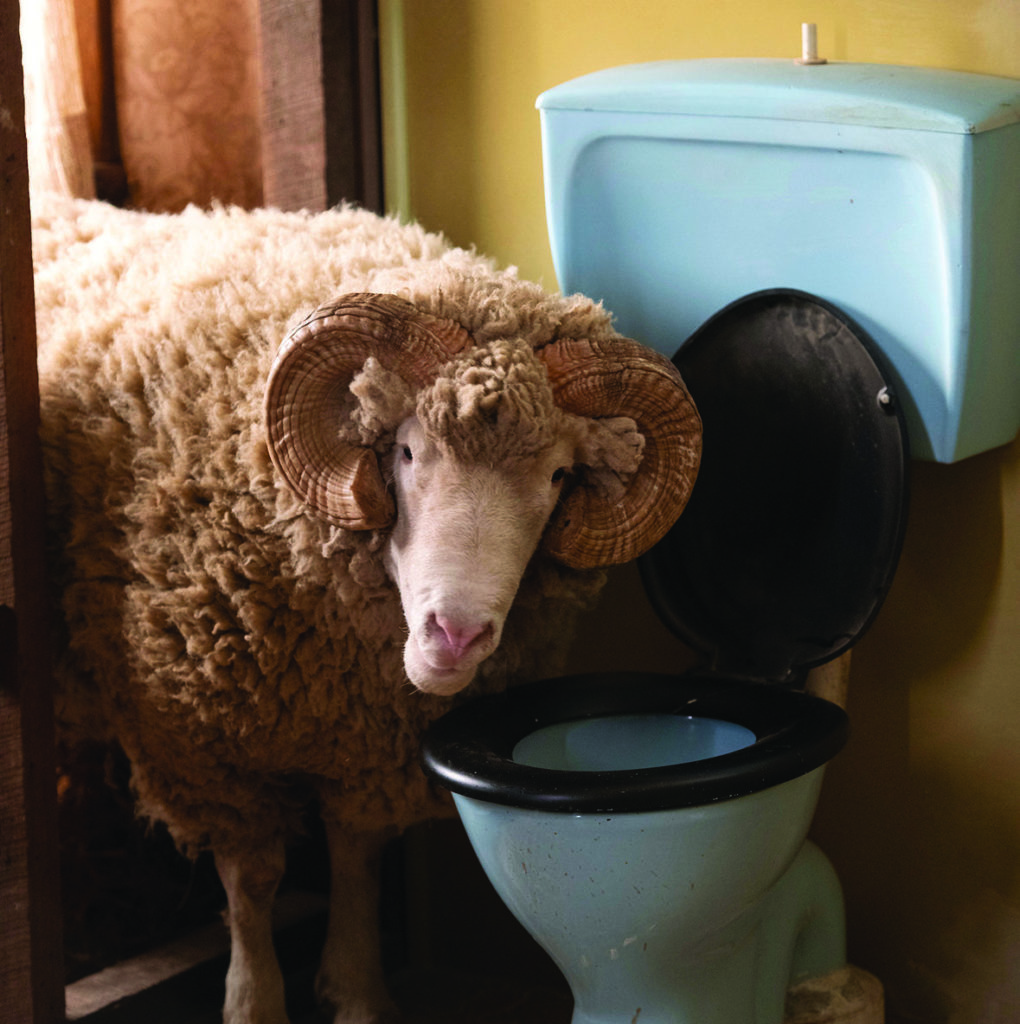
The film contains some intriguing symbolism and some astutely placed details. For example, in separate scenes, each brother is bathed by the other in water: Colin by Les in the scene at the beach; Les by Colin after the former passes out in a paddock after a bender (an indifferent Colin is persuaded to help by Kat). These moments of baptism might represent the fact that each brother’s salvation will only come through the forgiveness and acceptance of the other – as indeed it comes to pass – and by surrendering to something that might be described as love. On a more playful note, Les appears to be a fan of the 1970s British rock band Humble Pie: at one point he sings along to their song ‘Black Coffee’, and at another he sports an old band T-shirt. This feels like a precursor to his ‘humbling’ transformation from loutish and embittered old man to considerate friend and brother. The rest of the film’s soundtrack, largely made up of a jaunty bluegrass-influenced score from Antony Partos, marks a further distinction in mood from the original, which relies on Örvarsson’s more ethereal organ works.
Another significant feature of Sims’ film, and something it has in common with its predecessor, is exquisite cinematography. Director of photography Steve Arnold elegantly showcases the Great Southern region of Western Australia, near Albany, across all its seasons and both its coastline and undulating topography inland. The film also does an impressive job of capturing bushfires – from a distant viewpoint, with those all-too-recognisable unremitting plumes of smoke reaching the sky, as well as at the level of hands-on firefighting in the bush. The fires seen here actually doubled as real-life back-burns in the region around Mount Barker.[6]See ‘The Fire’, in ibid., p. 11.
To compare the two films as genuine works of art, the 2020 iteration of Rams measures up short against Hákonarson’s original; one can also cogitate over how Rams might have turned out if someone like, say, Warwick Thornton or Jocelyn Moorhouse had taken the directorial helm and the remake had been more faithful to the overarching melancholy of the original. But these are probably futile and unfair considerations: this is an inviting and accessible film on its own terms, and one that – the odd bit of uncouth language notwithstanding – might be described as a family movie. Rams, a fine work despite its smattering of weak points, deserves to find the wideranging, mainstream audience its makers were hoping for.
Endnotes
| 1 | The films screened together at the 2015 Toronto, Busan and Thessaloniki film festivals, as well as at the Palm Springs International Film Festival in January 2016. |
|---|---|
| 2 | See Karl Quinn, ‘Rams Stars Miranda Richardson and Sam Neill Lock Horns, Sheepishly, in WA’, The Sydney Morning Herald, 16 October 2020, <https://www.smh.com.au/culture/movies/rams-stars-miranda-richardson-and-sam-neill-lock-horns-sheepishly-in-wa-20201008-p563el.html>, accessed 10 November 2020. |
| 3 | See Katie Webb, ‘Scrapie’, Government of Western Australia, Department of Primary Industries and Regional Development website, <https://www.agric.wa.gov.au/livestock-biosecurity/scrapie>, accessed 10 November 2020. |
| 4 | Jules Duncan, ‘Writer’s Statement’, in Roadshow Films, Rams press kit, 2020, p. 15. Emphasis removed. |
| 5 | See ‘Introduction: The Saga of the Grimurson Brothers’, in ibid., p. 6. |
| 6 | See ‘The Fire’, in ibid., p. 11. |
